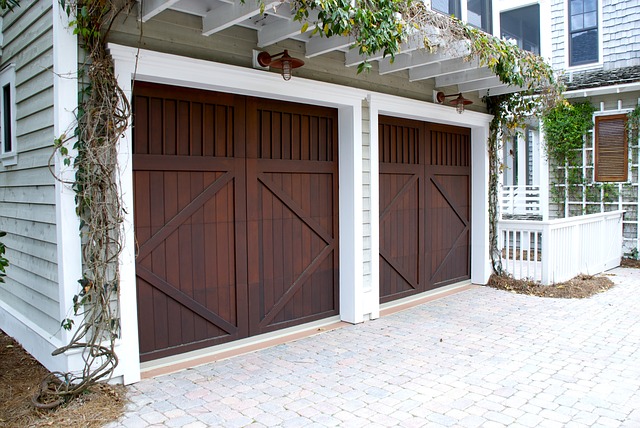We’ve got a few eye-opening statistics about garages. A U.S. Department of Energy survey found that 1 out of 4 of people with 2-car garages couldn’t park their car in it because it’s used to store other things. Another survey by the National Association of Professional Organizers (NAPO) found that 1 out of 2 homeowners named their garage as the most disorganized area of their house. Furthermore, more than half of homeowners plan to get their garage organized within the next two years. Does this sound familiar? Reclaiming your garage is a major project. Use our step-by-step guide to organizing your garage and park your car inside (yahoo!).
1. Set aside a large block of time for this project—garages typically take 12 hours for general clutter.
Plan for 3 or 4 time blocks of 3-4 hours each; most likely, it will be multiple weekends. Don’t wait until winter, when days are shorter and the garage will be freezing cold. If you can, pick at least the first weekend with no rain—you’ll need to take most items out of the garage.
2. Enlist helpers and make a task list.
Family or friends can certainly help; be sure they understand what they’ve signed up for and won’t become distractions. If you’ve got young kids, hire sitters or plan a weekend at the grandparents. Make a task list and give your helpers specific assignments with a time deadline. For instance, your teen can go through all the sports equipment and toys, while your spouse tackles the shelves full of tools and paint cans. We typically send two organizers out together for garages and work in 4-hour time chunks hands-on with clients. Clients are tired at the end of the session!
3. Move everything out of the garage.
Park your car(s) elsewhere so the driveway can be a staging area. Take the contents out of your garage and place in the driveway. If something is immediately trash or donation—non-working, broken, or outgrown items—set it in these separate piles.
4. Categorize and group all the items.
Group them into categories—e.g., automotive, camping gear, sports equipment, holiday decor, yard tools. As you are sorting the contents, evaluate each item and decide if it stays or goes. If you bought a specialty garden or hobby tool or sports equipment that takes up space, and you’ve used it once in the last 5 years it should probably go; add it to the trash or donation pile.
5. Plan out the garage layout.
Make some decisions about where you want to keep your things. Items used often, such as bikes or garden tools, should be stored where they’ll be easily seen and accessed. Less used items, such as holiday decor or seasonal sports equipment, can be stored up higher or lower, in the “less expensive real estate” areas.
6. Clean your garage.
Don’t spend too much precious time on this, but do give the floors a good sweep, clean up any spills or stains, and get rid of cobwebs, leaves, and other debris that have collected in the corners and edges.
7. Make decisions about storage solutions.
We use industrial shelving most often here. Some people like rolling ones from Costco if it will be placed next to a water heater and they are cautious about a leak. Others like the rolling aspect so they are able to periodically sweep the whole garage out. If the wheeled option is not of importance to you, this shelf from Lowe’s is an excellent price point and has a 350-pound weight capacity.
8. Put all the contents back into the garage.
Here’s the fun part: returning all your items back to the garage, in their new “homes”! Use larger labels on your totes and boxes; you need to be able to read the label from 3 to 4 feet away. We use the Avery shipping label (4″ wide x 3.33″ high). Clear bins also make things easier to see. Save the solid-colored bins for single-purpose items such as holiday decor. Back-saving tip: Don’t put heavy items up high where you could throw out your back by retrieving it.
9. Finish with the Donations and Trash piles.
Decide if each item will be disposed of, recycled, or donated. Old sports equipment can be donated to schools, tools can be donated to Habitat for Humanity; we also pay them to recycle client’s paint cans. The other way to dispose of latex paint is to dry out the cans by stirring in kitty liter or paint-dry chemicals, then placing them in the garbage fully-dried with the lid removed. As you can see, garages create much more garbage and donations than people realize—it’s always a bigger chore than anticipated!
10. Calendar a re-set for every four months.
Don’t let your garage fall into disarray after you’ve worked so hard to declutter and organize it. Set a calendar appointment every four months for a re-set; a couple hours should be enough. You don’t need to begin at #1 again. Evaluating and removing any trash or donation items, putting everything back in its place, and cleaning up will likely suffice.
Organizing the garage is not a project that excites most people, but the payout is so worth it! Parking in your garage will be a fantastic reward, especially once the Pacific Northwest rains begin. Of course, if you are overwhelmed by all this, we are here to help!
One last statistic that gives us a chuckle: 52% of homeowners want to have a garage their neighbors will envy.

